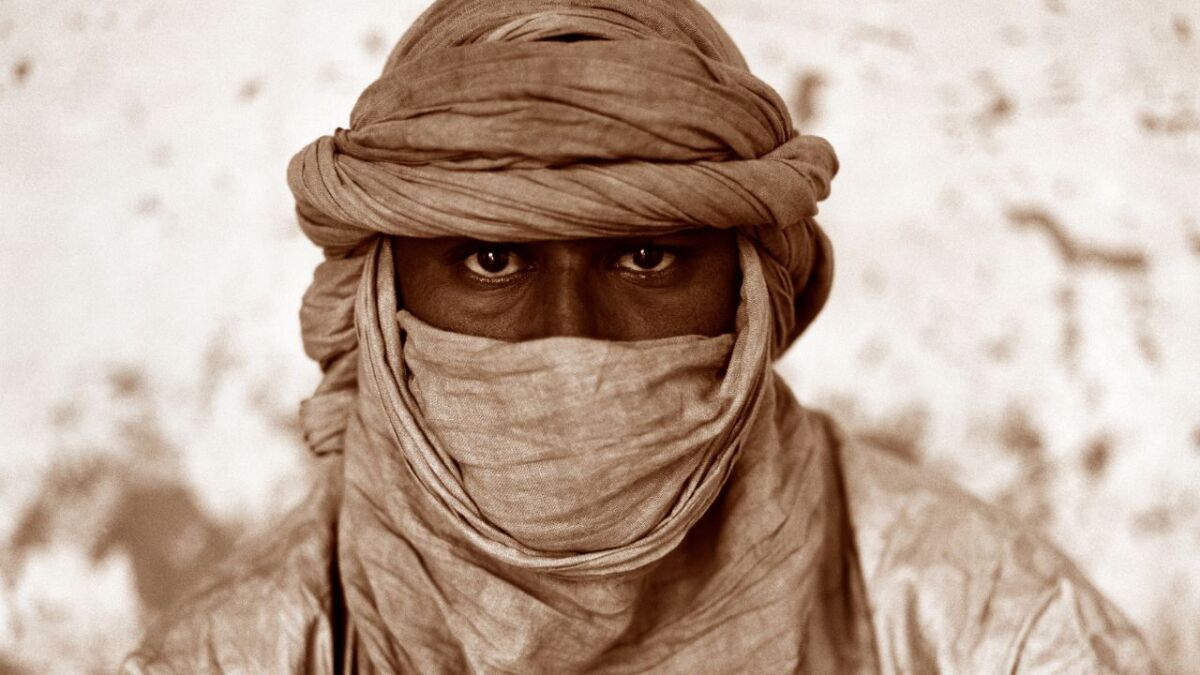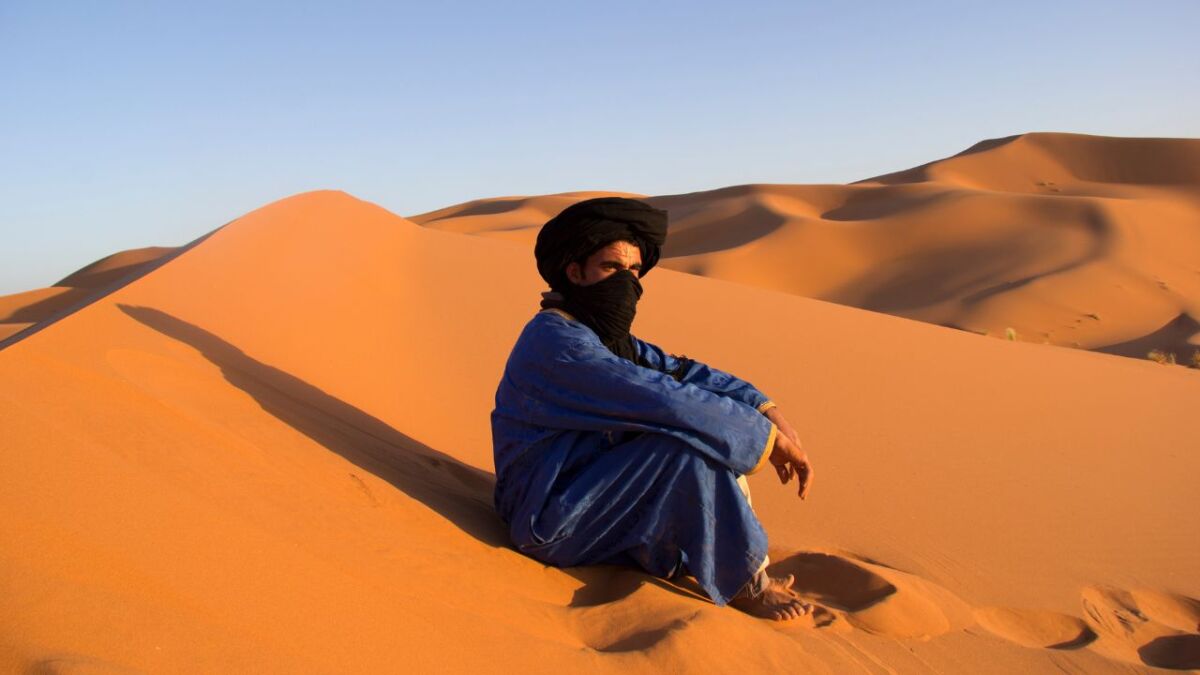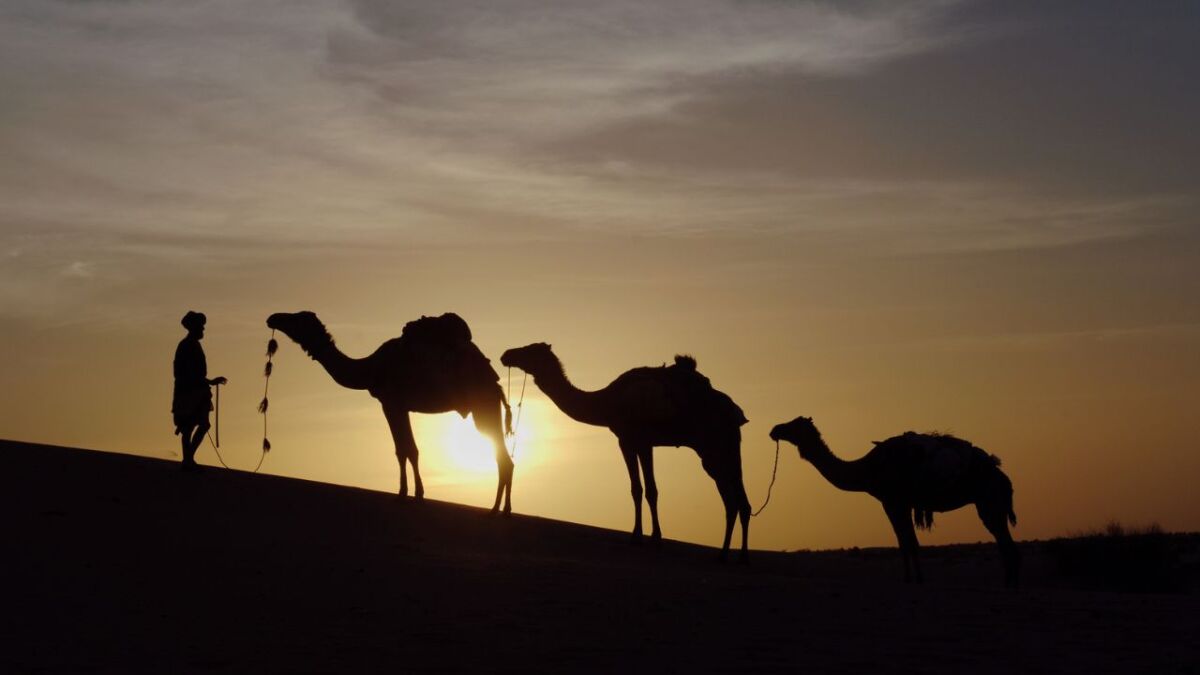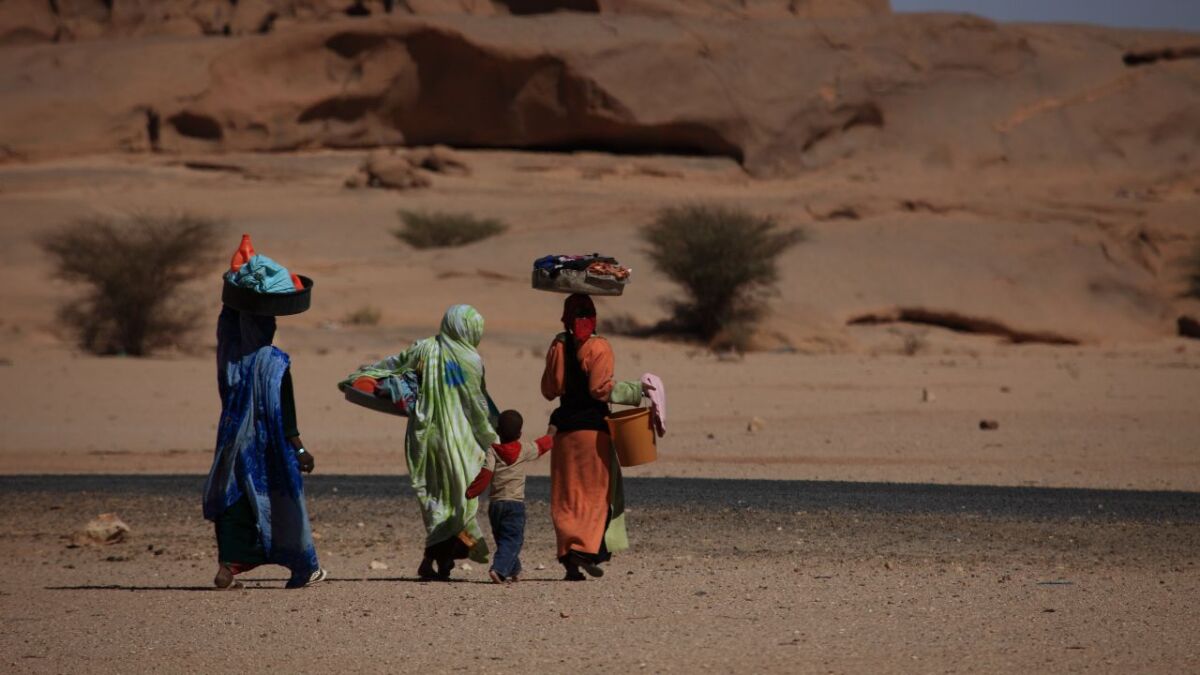Why do people wear so much clothing in the desert, and why you should too when it's hot?
In the desert, the population wears long black robes, mostly made from thick fabrics. Why don't they wear a T-shirt and instead opt for black clothing?


From Martin Gebhardt. Check out my “About me” page.
👉 The key facts from this guide
- Wearing long clothing protects you from extreme sunlight, wind, and sand in the desert.
- Clothing helps regulate your body heat and prevents excessive water loss through sweating.
- Light colors reflect sunlight and help reduce body heat.
- Your clothing should be made of lightweight fabrics such as cotton or linen that absorb moisture and allow the skin to breathe.
- A hat or turban protects your head, neck, and face from the sun, while sunglasses protect your eyes.
- The dark color of traditional clothing worn by desert dwellers absorbs heat and keeps the body cool.
The desert is a magical place with endless expanses, clear starry nights, and meditative tranquility.
On the other hand, there is extreme heat and little water. It is all the more surprising that human inhabitants are wrapped up in so much clothing.
But it is precisely the extreme weather and the scarcity of water that are the reason for complete coverage of the skin. The high level of sun exposure, sand whipped up by the wind, and water loss through sweating cause desert dwellers to wear long clothing.
Here, I am referring to dry deserts like the Sahara, but there are actually several other areas that fall under the term desert.
In the following, I would like to go into more detail about clothing in the desert. I want to understand it better to prepare and protect myself well in these latitudes. If you are also interested, then read on!
Why do people in the desert wear so much clothing? - A closer look
People in the desert wear a lot of clothing to protect themselves from extreme weather. This is because the weather in the desert can be extremely hot during the day and freezing at night.
Even though I have already answered this question, I would like to go into more detail here. This way, we can understand the reasons behind it and prepare ourselves well.
Sun exposure
In the desert, the sun beats down on you mercilessly. Everyone knows that! However, you are not only being radiated from above, but also from below.
The bright sand reflects the sun's rays in all directions. That is why it is so important to protect both our skin and our eyes accordingly.

Often, a simple hat is not enough to protect your face in the desert. That's why people in desert regions typically wear a turban, which not only protects the head, but also the neck and back of the neck. If needed, you can even tie the cloth in front of your face for extra protection.
If you have sunglasses, it's time to start wearing them. In a survival situation, you can even make makeshift glasses with some bark - cut small slits to see through and tie it around your head.
Without head protection, in addition to sunburn, you also risk heat stroke in the desert. It's better to be safe than sorry because once you're affected, finding a shady spot becomes the priority.
However, the rest of your body should also be protected, as sunburn can happen faster than expected.
When it comes to footwear, desert dwellers often wear sandals - they're airy and protect the feet from hot sand. However, the feet are still directly exposed to sunlight, so it's important to apply sunscreen if you choose to wear sandals.
Sand and Dust
Let's face it, sand is everywhere and will likely be all over your body, especially if you're wearing airy clothing.
You can protect yourself from sand blasting directly into your face or skin, which can cause irritation, by taking precautions. Sandstorms can also be extremely uncomfortable.
Extreme Temperature Changes
Dry deserts are an extreme habitat. Only a few animals and plants have found a niche there and can withstand the heat and lack of water.
Similarly, extreme are the temperature fluctuations between day and night. This is due to the nature of the sandy soil. The sand is permeated with air and conducts heat poorly. In addition, the soil can hardly store thermal energy. The result is that the soil only heats up superficially and gives off the heat to space unhindered at night.
This results in temperature differences of up to 30 degrees Celsius! In winter, it can drop to -10 °C at night, while in summer, it can reach up to 60 °C during the day.
So wearing long clothing not only protects you from the sun, but also from the cold. In any case, you should have warmer clothing at hand.

Dry Air
With sunlight, dry air poses some risks for our skin. It additionally dries out our skin, causes cracks, and can even lead to minor bleeding. Not a pleasant thought with all the sand flying around.
Lightweight clothing, which I highly recommend, only minimally protects you from the dry air, but there is another decisive factor.
Due to the low humidity, we also sweat more. On bare skin, sweat evaporates, and we continue to sweat. This does not cool our body down and can lead to dehydration.
You can counteract this with long clothing. Because the body can sweat up to 15 liters of water. With long clothing, the water is collected and cools your body. This in turn leads to less water loss.
Here, I clearly recommend cotton or even wool for at least the upper body, as they can absorb water. It's a different story when it comes to underwear. To avoid infections, you should opt for nylon underwear. But more on that shortly.
Suitable textiles for surviving in the desert
1. Cotton
As mentioned above, cotton clothing is suitable for the desert. It is lightweight and absorbs moisture. While it may not be pleasant to walk around in sweaty clothing, you will get used to it.
2. Linen
If you don't like the idea of your clothing absorbing a lot of sweat, linen should be your first choice. It is also very lightweight and airy. Just make sure to protect yourself from the sun. If the fabric is too thin, the sun will still find its way through.
3. Wool
Wool keeps you warm at night, and there is Merino wool that is suitable for daytime wear. It is said to regulate temperature, making it perfect for the desert.
4. Synthetic clothing
I already mentioned above that synthetic material is not ideal for the upper layer of clothing. However, it is perfect for underwear!
Synthetic material wicks away moisture, so your underwear won't get completely soaked with sweat. This is especially practical if you can't change your underwear every day. Snug-fitting underwear is preferred because it doesn't rub as much as shorts, for example.

The best clothing options for people in the desert
Wearing a lot of clothing is not the only solution. Choosing the right clothing is also important.
Some of the best clothing options for people in the desert are:
1. Loose-fitting clothes
The first and most significant thing to consider is that you should always wear loose-fitting clothes in the desert.
This is because loose-fitting clothes allow your body to breathe and help you stay cool and dry in the desert.
2. Lightweight fabrics
Another essential thing to consider is deciding on lightweight fabrics for your clothes. This is because lightweight fabrics help you stay cool in the desert.
3. Light colors
Another thing to consider is selecting light colors for your clothes – like white clothing. Light colors reflect sunlight and also help you stay cooler.
4. Long sleeves
Long sleeves and long pants are equally critical. This is because long sleeves and pant legs protect your skin from the harmful effects of the sun and sand.
5. Hats
Another significant thing to consider is wearing a hat. The hat protects your head from the harmful effects of the sun. Read here about different types of hats and how they protect you.
6. Sunglasses
Sunglasses are also an important piece of clothing. They protect your eyes from the strong brightness of the sun and sand, which can be harmful to your eyes.

Questions and Answers
Why does long clothing help against heat?
Long clothing helps against heat because it protects the skin from UV rays. The long sleeves and legs also provide a larger surface area to dissipate body heat.
Why do people from desert tribes wear dark clothing?
The dark color absorbs the heat from the sun and therefore keeps the bodies of desert tribes cool. Additionally, dark clothing provides better protection from UV radiation - which is permanently harmful - than light textiles.
What clothing should you wear for a desert trip?
The clothing you should wear for a desert trip depends on the type of trip you're taking. For example, if you're driving through the desert in an open jeep, it's important to wear long pants and sleeves as well as a hat or scarf to protect yourself from dust and the sun. However, if you intend to hike or camping, you should wear lightweight clothing and sturdy shoes.
Also read
9 great tips for hiking in hot weather - Hiking in the heat can be dangerous if you don't know how to protect yourself. Here are 9 tips to make your hike on a hot day enjoyable.
What provides greater cooling - white or black clothing?
A white t-shirt provides greater cooling because it reflects the most solar energy. However, this only applies to our European latitudes. In the Sahara, you should wear dark and long textiles constantly to protect yourself from UV radiation, sand and heat.
Conclusion: Shorts and a t-shirt will eventually kill you in the desert
As you can see, shorts and a t-shirt are in no way appropriate in the desert and can make your time there a living hell.
By following the lead of people who live there and have the most experience, we can also prepare ourselves ideally for the harsh conditions in the desert.
Bedouins or Tuaregs have been living in the desert for millennia and know about the treasures and dangers of the sea of sand.
Most importantly, they know how to protect themselves from the extreme weather there!

Sources for the guide
https://de.wikipedia.org/wiki/W%C3%BCste#Kulturgeschichte
https://www.over-the-hills.com/die-richtige-kleidung-fuer-die-wueste/
http://israelabenteurer.de/israel-reiseblog/wandern/wueste/wuestenbekleidung/
https://www.tagesspiegel.de/themen/gesundheit/warum-ist-es-in-der-wueste-nachts-so-kalt/736224.html

Author of the guide
Martin Gebhardt
Hey, I'm Martin. On my blog, you will learn the basics and numerous details about living in the wild. I think survival, bushcraft and the good life in nature are the keys to happiness. Find me here on Instagram or on YouTube. You can find more about my mission on the About Me page.
Was this guide helpful?
30 people found this guide helpful.
5.00 out of 5 points (30 Ratings)
Comments (0)
This post may contain affiliate links. So if you click on the links and make a purchase, I will receive a small commission at no additional cost to you. Click here, to learn more about it.



